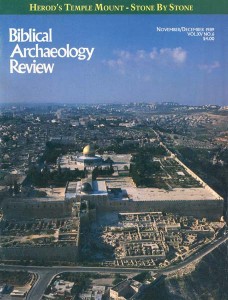Glossary: Measuring Time Archaeologically
You Too Can Talk About Archaeological Periods
Do your eyes glaze over when archaeologists use technical terms like “Iron Age II” or “the Chalcolithic period”? These terms do, however, provide helpful rubrics for understanding the development of culture in the lands of the Bible. Without using this terminology, it’s virtually impossible to hold a meaningful archaeological conversation. It’s important—and, fortunately, not that difficult—to gain at least a general familiarity with the terms used to designate major archaeological periods. The broadest and most general of these periods are the Stone, Bronze and Iron Ages named by 19th-century archaeologists for the characteristic material for tools and weapons in each period. While the Stone Age (and its subdivisions) remains entirely in the realm of prehistory—before recorded historical events—the Bronze and Iron Ages and subsequent archaeological periods in the ancient Near East have been closely coordinated with recorded historical events. Each of these later periods has been further subdivided to reflect changes in material culture, such as settlement patterns, architectural innovation and pottery styles. In certain cases, however, the precise points of division of these sub-periods are not agreed upon by all scholars. Thus, while the characteristics of the major archaeological periods are generally accepted, the name used for a sub-period, its particular features as well as the time span included in that sub-period, may remain subjects of continuing controversy.
Already a library member? Log in here.
Institution user? Log in with your IP address.

